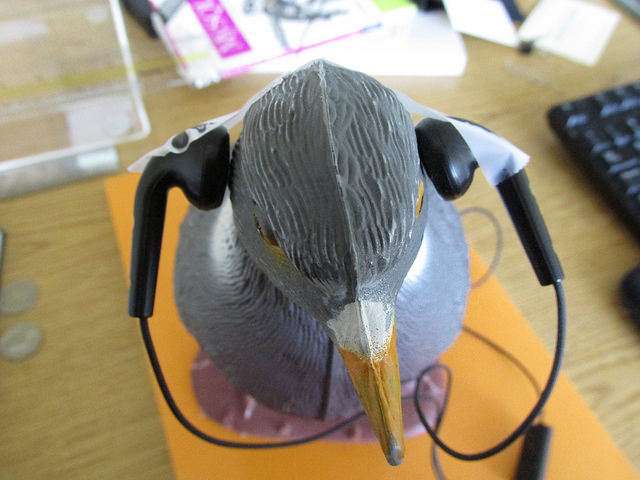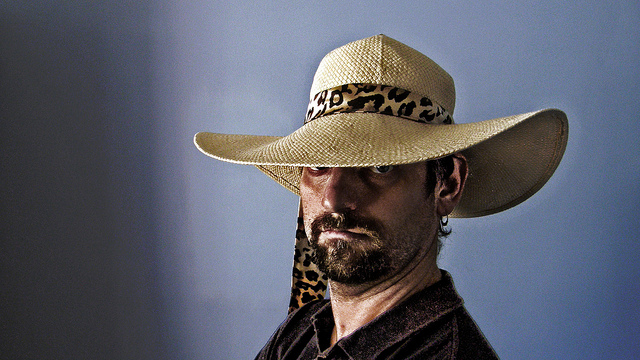Archive for the ‘Imagination’ Category
Imagination
 If you can’t imagine it, it can’t be done.
If you can’t imagine it, it can’t be done.
But if it can’t be done, how can you imagine it?
No one is buying a product like the one you imagined. There’s no market.
No one can buy an imaginative product that doesn’t yet exist. There may be a market.
Imagine things are good, just as they are.
Imagine an upstart competitor will obsolete your best product.
Let’s fix what is.
Let’s imagine what isn’t, and build it.
Don’t waste time imagining radical new concepts. There’s no way to get there.
Use your imagination to create an unobtainable concept, then build a bridge to get there.
Imagine the future profits of our great recipe. Let’s replicate it.
Imagine our recipe has a half-life. Let’s disrupt it.
To be competitive, we’ve got to use our imagination to reduce the cost of our products.
To be competitive, we’ve got to use our imagination to obsolete our best work.
Put together a specification, a detailed Gannt chart and make it happen on time.
Imagine what could be, and make a prototype.
Let’s shore up our weaknesses and live to fight another day.
Let’s imagine our strength as a weakness and invent the future.
We are the best in the industry. Imagine how tough it is to be our competitor.
Imagine there’s a hungry start-up who will do whatever it takes to get the business.
We’ve got to protect our market share.
Imagine what we could create if we weren’t constrained by our success.
Imagine how productive we will be when we standardize the work.
Imagine how much fun we will have when we reinvent the industry.
Ask the customer what they want, built it and launch it.
Imagine what could be, build a prototype, show the customer, listen and refine.
Let’s follow the script. Imagine the profits.
Let’s burn the script and imagine a new one.
Image credit — Allegra Ricci
You don’t find the next new thing, it finds you.
 Doing something new is harder than it looks.
Doing something new is harder than it looks.
The first step to doing new is to realize you have no interest in doing what was done last time. Profitable or not, the same old recipe just doesn’t do it for you. You don’t have to know why you don’t want to replay the tape, you just have to know you don’t want to. So don’t.
But it’s not enough to know what you don’t want to do, you’ve got to know what you do want to do. To figure that out, you’ve got to stop doing. The focused, churning mind isn’t your friend here because it thinks of ideas that are too closely related to what it knows. This is the job for the idle mind. The idle mind has nothing to focus on, so it doesn’t. It runs in the background imagining the impossible and considering the absurd. And since it runs without your knowledge, you can’t get in its way. So do nothing. Turn off your electronics and sit. Feel uncomfortable. Give your mind no place to go so it can go where it wants. Read a biography about an important historical figure. Travel to their century so while you’re visiting your subconscious can figure out what to do.
You don’t figure out what’s next. What’s next finds you while you’re not looking for it. And the best way to do that is to do nothing.
Doing nothing is a lot of work. And it’s difficult to do. My advice – start with 15 minutes of nothing. Anything more is too much. Take your mobile phone out of your pocket, put it on your desk (or throw it at the floor and stomp on it) and walk to a quiet place and sit. Close your eyes, sit and watch. You’ll see your monkey mind search for the next big thing and not find it. Then you’ll see it think about something that scares you and you’ll get scared. Then you’ll see it think about an old argument and you’ll jump back into it and relive it. Then, after a while, you’ll realize you’re not watching, you’re reliving. Then you’ll see your mind try again in vain to find the next thing to do. And after 15 minutes of this nonsense, you’re done with your first session of nothing.
Repeat this process over 5 days and a good idea will find you. You may be sleeping, showering, eating or reading, but no worries, it will find you. Something will click and you’ll put together two things that aren’t meant to be together but, once together, make a lot of sense – like a strange Ben and Jerry’s flavor you taste for the first time and eat the whole pint.
The new idea isn’t the new thing itself, it’s the first step toward finding the next thing to do. But, you’ve started wandering down a crazy new path that’s no longer crazy, and you’re on your way.
Resume your daily 15 minute sessions of nothing and, in between, mix in some small experiments to test, refine or invalidate your next new thing. Repeat, as needed.
And don’t stop until what you’re looking for finds you.
Image credit – Figure Focus.
Diversity Through Podcasts
 Podcasts are short bursts of learning curated to please your ear. And with training budgets slashed, podcasts can be a wonderful and cost effective (free) way to learn.
Podcasts are short bursts of learning curated to please your ear. And with training budgets slashed, podcasts can be a wonderful and cost effective (free) way to learn.
The only way to battle uncertainty is to increase diversity. Bringing together people with diverse experiences lets us see things from multiple perspectives so we can better navigate uncertain terrain. But increasing your personal diversity helps too. Giving yourself new knowledge from diverse fields helps you broaden your perspective and makes you better at handling the uncertainty that comes with life.
The hard part about podcasts is deciding which ones to listen to. In my work to increase my diversity, I’ve listened to a lot of podcasts. Some were interesting and inspiring and others weren’t.
Below are some of my favorite podcast episodes. There’s a short description of each one, along with what I learned from them. Click the link to take you to the episode and you can listen to each one. No need to download. Just find the play button and click it.
Enjoy.
9-Volt Nirvana (Radiolab) — I learned about how the brain works and how it can be supercharged (with a 9-volt battery) to learn faster. I listened to this one on a long car ride with my daughter. She doesn’t like podcasts, but she was captivated by this one.
The Living Room (Love and Radio) — A story about how things can look differently than they are, especially when looking from the outside. I learned how our assumptions and the stories we tell ourselves shape how we see the world. This one is emotionally gripping.
Guided by Voices (Benjamin Walker’s Theory of Everything) — How Kant and Kepler both tried (and failed) to record the universal harmonies Pythagoras once heard. They struggled to make peace with the irrationality and disharmony of nature. I learned disharmony is natural and to embrace it. There’s a segment in the middle that’s not about Kant and Kepler that you may want to skip. To skip that segment, listen from the beginning and at 9:30 skip to 23:07 and listen to the end.
Eckhart Tolle’s The Power of Now (On Being) — I love Eckhart’s voice and his chuckle. I learned how I am not my emotions; I am the space for my emotions. And I learned about the Pain Body. That, on its own, was worth it. Krista Tippett is a brilliant interviewer.
Belt Buckle (Mystery Show) — A story about a long-lost belt buckle and its journey home. I learned how we attach meaning to objects, and that can be a good thing.
The Wrath of the Khans 1 (Dan Carlin’s Hardcore History) — This is a riveting story of Genghis Khan. Dan Carlin is wonderful – he sits you right in the middle of history. (Listen for two minutes and you’ll feel it.) I learned the power of personal will and how history changes over time. To skip Dan’s wonderful introduction and get a feel for the Great Khan, start at 19:00 and listen for 10 minutes. If you like what you hear, keep listening. This podcast is long almost 2 hours and it’s the first of a series of five on the Great Khan. This is one of my most favorite favorites.
image credit — mpclemens
Ideas That Threaten
 Every idea that’s worth its salt will be rejected out of hand. That’s just how it is. You can get angry because you didn’t get the support you think you deserve or you can accept the fact that their negative reaction is about them. The first way you shut down and your idea dies on the vine. The second way you let their negativity pass right through you and continue your uphill slog until your idea is commercialized. Either way, it’s your choice.
Every idea that’s worth its salt will be rejected out of hand. That’s just how it is. You can get angry because you didn’t get the support you think you deserve or you can accept the fact that their negative reaction is about them. The first way you shut down and your idea dies on the vine. The second way you let their negativity pass right through you and continue your uphill slog until your idea is commercialized. Either way, it’s your choice.
It’s difficult to let others’ negativity pass though you. It may be easier to flip the situation on its head.
When confronted with an exceptional idea, people generate a negative response. The underlying feeling is fear, but usually manifests as aggressive dismissal. Instead of reacting with anger, maybe you can learn to see their fear-based reaction as a signifier of significance. When you have a tooth with a cavity and you drink cold water, your tooth creates a reactionary zing of electrical energy, a tell-tale sign of the underlying decay. The zing signifies the significance. Just as the cold water elicits an electrical response from the cavity, the exceptional idea elicits a negative response from the person. Don’t worry about the negative response, revel in it.
The only thing better than an idea that is so good it threatens is an idea that’s so good no one can understand. These ideas are so deep, no novel, so twisted they conflict with conventional wisdom. These ideas confuse everyone, especially the experts. At first the experts aren’t threatened because they don’t yet understand. They chuckle and take pity on you for thinking such strange thoughts. Just as a negative reaction indicates significance, their chuckles and pity are leading indicators of significance. Don’t let their reactions deter you, let them inspire you. As your unconventional wisdom seeps into them and they begin to understand, their chuckles will morph into aggressive dismissal. This tell-tale sign makes it clear you’re on to something.
If your idea doesn’t get a negative reaction, you’re not trying hard enough. Think bigger. If your idea doesn’t threaten your most profitable product, come up with one that does. If your idea doesn’t shake the fillings out of your business model, go away and don’t come back to you have one that does.
Companies don’t need more ideas, they need ideas that are more creative. They don’t need more continuous improvement, they need more discontinuous improvement. And they don’t need ideas that build on success, they need ideas that dismantle it.
If your ideas don’t threaten, don’t bother.
Image credit — Ed Schipul
Serious Business
 If you’re serious about your work, you’re too serious. We’re all too bound up in this life-or-death, gotta-meet-the-deadline nonsense that does nothing but get in the way.
If you’re serious about your work, you’re too serious. We’re all too bound up in this life-or-death, gotta-meet-the-deadline nonsense that does nothing but get in the way.
If you’re into following recipes, I guess it’s okay to be held accountable to measuring the ingredients accurately and mixing the cake batter with 110% effort. When your business is serious about making more cakes than anyone else on the planet, it’s fine to take that seriously. But if you’re into making recipes, serious doesn’t cut it. Coming up with new recipes demands the freedom of putting together spices that have never been combined. And if you’re too serious, you’ll never try that magical combination that no one else dared.
Serious is far different than fully committed and “all in.” With fully committed, you bring everything you have, but you don’t limit yourself by being too serious. When people are too serious they pucker up and do what they did last time. With “all in” it’s just that – you put all your emotional chips on the line and you tell the dealer to “hit.” If the cards turn in your favor you cash in in a big way. If you bust, you go home, rejuvenate and come back in the morning with that same “all in” vigor you had yesterday and just as many chips. When you’re too serious, you bet one chip at a time. You don’t bet many chips, so you don’t lose many. But you win fewer.
The opposite of serious is not reckless. The opposite of serious is energetic, extravagant, encouraging, flexible, supportive and generous. A culture of accountability is serious. A culture of creativity is not.
I do not advocate behavior that is frivolous. That’s bad business. I do advocate behavior that is daring. That’s good business. Serious connotes measurable and quantifiable, and that’s why big business and best practices like serious. But measurable and quantifiable aren’t things in themselves. If they bring goodness with them, okay. But there’s a strong undercurrent of measurable for measurable’s sake. It’s like we’re not sure what to do, so we measure the heck out of everything. Daring, on the other hand, requires trust is unmeasurable. Never in the history of Six Sigma has there been a project done on daring and never has one of its control strategies relied on trust. That’s because Six Sigma is serious business. Serious connotes stifling, limiting and non-trusting, and that’s just what we don’t need.
Let’s face it, Six Sigma and lean are out of gas. So is tightening-the-screws management. The low hanging fruit has been picked and Human Resources has outed all the mis-fits and malcontents. There’s nothing left to cut and no outliers to eliminate. It’s time to put serious back in its box.
I don’t know what they teach in MBA programs, but I hope it’s trust. And I don’t know if there’s anything we can do with all our all-too-serious managers, but I hope we put them on a program to eliminate their strengths and build on their weaknesses. And I hope we rehire the outliers we fired because they scared all the serious people with their energy, passion and heretical ideas.
When you’re doing the same thing every day, serious has a place. When you’re trying to create the future, it doesn’t. To create the future you’ve got to hire heretics and trust them. Yes, it’s a scary proposition to try to create the future on the backs of rabble-rousers and rebels. But it’s far scarier to try to create it with the leagues of all-too-serious managers that are running your business today.
Image credit — Alan
Compete with No One
 Today’s commercial environment is fierce. All companies have aggressive growth objectives that must be achieved at all costs. But there’s a problem – within any industry, when the growth goals are summed across competitors, there are simply too few customers to support everyone’s growth goals. Said another way, there are too many competitors trying to eat the same pie. In most industries it’s fierce hand-to-hand combat for single-point market share gains, and it’s a zero sum game – my gain comes at your loss. Companies surge against each other and bloody skirmishes break out over small slivers of the same pie.
Today’s commercial environment is fierce. All companies have aggressive growth objectives that must be achieved at all costs. But there’s a problem – within any industry, when the growth goals are summed across competitors, there are simply too few customers to support everyone’s growth goals. Said another way, there are too many competitors trying to eat the same pie. In most industries it’s fierce hand-to-hand combat for single-point market share gains, and it’s a zero sum game – my gain comes at your loss. Companies surge against each other and bloody skirmishes break out over small slivers of the same pie.
The apex of this glorious battle is reached when companies no longer have points of differentiation and resort to competing on price. This is akin to attrition warfare where heavy casualties are taken on both sides until the loser closes its doors and the winner emerges victorious and emaciated. This race to the bottom can only end one way – badly for everyone.
Trench warfare is no way for a company to succeed, and it’s time for a better way. Instead of competing head-to-head, it’s time to compete with no one.
To start, define the operating envelope (range of inputs and outputs) for all the products in the market of interest. Once defined, this operating envelope is off limits and the new product must operate outside the established design space. By definition, because the new product will operate with input conditions that no one else’s can and generate outputs no one else can, the product will compete with no one.
In a no-to-yes way, where everyone’s product says no, yours is reinvented to say yes. You sell to customers no one else can; you sell into applications no one else can; you sell functions no one else can. And in a wicked googly way, you say no to functions that no one else would dare. You define the boundary and operate outside it like no one else can.
Competing against no one is a great place to be – it’s as good as trench warfare is bad – but no one goes there. It’s straightforward to define the operating windows of products, and, once define it’s straightforward to get the engineers to design outside the window. The hard part is the market/customer part. For products that operate outside the conventional window, the sales figures are the lowest they can be (zero) and there are just as many customers (none). This generates extreme stress within the organization. The knee-jerk reaction is to assign the wrong root cause to the non-existent sales. The mistake – “No one sells products like that today, so there’s no market there.” The truth – “No one sells products like that today because no one on the planet makes a product like that today.”
Once that Gordian knot is unwound, it’s time for the marketing community to put their careers on the line. It’s time to push the organization toward the scary abyss of what could be very large new market, a market where the only competition would be no one. And this is the real hard part – balancing the risk of a non-existent market with the reward of a whole new market which you’d call your own.
If slugging it out with tenacious competitors is getting old, maybe it’s time to compete with no one. It’s a different battle with different rules. With the old slug-it-out war of attrition, there’s certainty in how things will go – it’s certain the herd will be thinned and it’s certain there’ll be heavy casualties on all fronts. With new compete-with-no-one there’s uncertainty at every turn, and excitement. It’s a conflict governed by flexibility, adaptability, maneuverability and rapid learning. Small teams work in a loosely coordinated way to test and probe through customer-technology learning loops using rough prototypes and good judgement.
It’s not practical to stop altogether with the traditional market share campaign – it pays the bills – but it is practical to make small bets on smart people who believe new markets are out there. If you’re lucky enough to have folks willing to put their careers on the line, competing with no one is a great way to create new markets and secure growth for future generations.
Image credit – mae noelle
Battle Success With No-To-Yes
 Everyone says they want innovation, but they don’t – they want the results of innovation.
Everyone says they want innovation, but they don’t – they want the results of innovation.
Innovation is about bringing to life things that are novel, useful and successful. Novel and useful are nice, but successful pays the bills. Novel means new, and new means fear; useful means customers must find value in the newness we create, and that’s scary. No one likes fear, and, if possible, we’d skip novel and useful altogether, but we cannot. Success isn’t a thing in itself, success is a result of something, and that something is novelty and usefulness.
Companies want success and they want it with as little work and risk as possible, and they do that with a focus on efficiency – do more with less and stock price increases. With efficiency it’s all about getting more out of what you have – don’t buy new machines or tools, get more out of what you have. And to reduce risk it’s all about reducing newness – do more of what you did, and do it more efficiently. We’ve unnaturally mapped success with the same old tricks done in the same old way to do more of the same. And that’s a problem because, eventually, sameness runs out of gas.
Innovation starts with different, but past tense success locks us into future tense sameness. And that’s the rub with success – success breeds sameness and sameness blocks innovation. It’s a strange duality – success is the carrot for innovation and also its deterrent. To manage this strange duality, don’t limit success; limit how much it limits you.
The key to busting out of the shackles of your success is doing more things that are different, and the best way to do that is with no-to-yes.
If your product can’t do something then you change it so it can, that’s no-to-yes. By definition, no-to-yes creates novelty, creates new design space and provides the means to enter (or create) new markets. Here’s how to do it.
Scan all the products in your industry and identify the product that can operate with the smallest inputs. (For example, the cell phone that can run on the smallest battery.) Below this input level there are no products that can function – you’ve identified green field design space which you can have all to yourself. Now, use the industry-low input to create a design constraint. To do this, divide the input by two – this is the no-to-yes threshold. Before you do you the work, your product cannot operate with this small input (no), but after your hard work, it can (yes). By definition the new product will be novel.
Do the same thing for outputs. Scan all the products in your industry to find the smallest output. (For example, the automobile with the smallest engine.) Divide the output by two and this is your no-to-yes threshold. Before you design the new car it does not have an engine smaller than the threshold (no), and after the hard work, it does (yes). By definition, the new car will be novel.
A strange thing happens when inputs and outputs are reduced – it becomes clear existing technologies don’t cut it, and new, smaller, lower cost technologies become viable. The no-to-yes threshold (the constraint) breaks the shackles of success and guides thinking in a new directions.
Once the prototypes are built, the work shifts to finding a market the novel concept can satisfy. The good news is you’re armed with prototypes that do things nothing else can do, and the bad news is your existing customers won’t like the prototypes so you’ll have to seek out new customers. (And, really, that’s not so bad because those new customers are the early adopters of the new market you just created.)
No-to-yes thinking is powerful, and though I described how it’s used with products, it’s equally powerful for services, business models and systems.
If you want innovation (and its results), use no-to-yes thinking to find the limits and work outside them.
Orchids and Innovation – Blooms from the Same Stem
 Innovation is like growing orchids – both require a complex balance of environmental factors, both take seasoned green thumbs to sprout anything worth talking about, what worked last time has no bearing on this time, and they demand caring and love.
Innovation is like growing orchids – both require a complex balance of environmental factors, both take seasoned green thumbs to sprout anything worth talking about, what worked last time has no bearing on this time, and they demand caring and love.
A beautiful orchid is a result of something, and so is innovation. It all starts with the right seeds, but which variety? Which color? With orchids, there are 21,950 – 26,049 species found in 880 genera and with innovation there are far more options. So which one and why? Well, it depends.
It’s no small feat to grow orchids or innovate:
To propagate orchids from seed, you must work in sterile conditions. The seeds must be grown in a gelatinous substance that contains nutrients and growth hormones. You must also be very patient. It takes months for the first leaves to develop, and, even then, they will only be visible with a magnifying glass. Roots appear even later. It will be at least three, and possibly as many as eight years before you see a bloom. — https://www.gardeners.com/how-to/growing-orchids/5072.html
[This is one of the best operational definitions of innovation I’ve ever seen.]
But there’s another way:
It is far easier to propagate orchids by division. But remember that dividing a plant means forsaking blooms for at least a year. Also, the larger the orchid plant, the more flowers it will produce. Small divisions take many years to mature. — https://www.gardeners.com/how-to/growing-orchids/5072.html
So do you grow from seed or propagate by division? It depends. There are strengths and weaknesses of both methods, so which best practice is best? Neither – with orchids and innovation no practices are best, even the ones described in the best books.
If you’ve been successful growing other flowers, you’re success is in the way and must be unlearned. Orchids aren’t flowers, they’re orchids. And if you’ve been successful with lean and Six Sigma, you’ve got a culture that will not let innovation take seed. Your mindset is wrong and you’ve got to actively dismantle the hothouse you’ve built – there’s no other way. Orchids and innovation require the right growing climate – the right soil, the right temperature, the right humidity, the right amount of light, and caring. Almost the right trowel, almost the right pot, and almost the right mindset and orchids and innovation refuse to flower.
And at the start the right recipe is unknown, yet the plants and the projects are highly sensitive to imperfect conditions. The approach is straightforward – start a lot of seeds, start a lot of propagation experiments, and start a lot of projects. But in all cases, make them small. (Orchids do better in small pots.)
Good instincts are needed for the best orchids to come to be, and these instincts can be developed only one way – by growing orchids. Some people’s instincts are to sing to their orchids and some play them classical music, and they’re happy to do it. They’re convinced it makes for better and fuller blooms and who’s to say if it matters? With orchids, if you think it matters, the orchids think it matters, so it matters. And let’s not kid ourselves – innovation is no different.
With orchids and innovation, mindset, instincts, and love matter, maybe more than anything else. And for that, there are no best practices.
Image credit — lecercle.
If it’s not different, it’s not innovation.
 Creative products are novel and useful; Innovative products are novel, useful, and successful. Beforehand, it’s impossible to know if something will be successful, but if it’s useful there’s a chance it could be; beforehand, it’s subjective whether something will be useful, but if it’s novel there’s a chance; but no one is sure what novel means, so replace it with “different” and you’re onto something. It’s clear if something is different, and if it’s different, there’s a chance it could be creative and innovative. Said another way,
Creative products are novel and useful; Innovative products are novel, useful, and successful. Beforehand, it’s impossible to know if something will be successful, but if it’s useful there’s a chance it could be; beforehand, it’s subjective whether something will be useful, but if it’s novel there’s a chance; but no one is sure what novel means, so replace it with “different” and you’re onto something. It’s clear if something is different, and if it’s different, there’s a chance it could be creative and innovative. Said another way,
if something isn’t different it cannot be creative, nor can it be innovative.
If you can generate more things that are different, you’ve increased your chances of creativity and innovation. And if you generate more ideas that are different, you’ll create more things that are different. Go on a quest to create more ideas that are different and you’ll have more creativity and innovation.
Ideas that are different come from the firing of different neural pathways. And to get different pathways to fire, you’ve got to first recognize when the old ones are firing. To do this, you’ve got to be aware of your worn pathways and be aware you’re reusing the overused. A different environment is needed – an environment that governs speed. If you have a culture of speed and productivity, this will be different. It doesn’t matter what the different environment is, it matters what it isn’t.
Different ideas result from the collision of old ideas seen from a new perspective. Put different people together who have different old ideas and different perspectives and different ideas will grow from the collisions. There’s no recipe for the exact distribution of people, but if you don’t put them together now, then those are them.
And to break new neural pathways, the environment in which ideas should be different. Again, there’s no prescription for the type of space or the furniture, just that it’s different. If the engine that creates the old ideas lives in an ordered space, make the different one disordered; if there’s carpet all around, lay down some linoleum; if there’s no art on the corporate walls, hang some; if the furniture matches across the teams, make it a clustered-jumble of mismatched pieces. The general approach: whatever it looks like and feels like where the same ideas are regurgitated day-in-day-out, do the opposite.
And to attract different colliders and their ideas, provide something different in the different space. If your regular coffee is terrible, the different coffee should be amazing; where people queue up to use the same tired tools, provide too many seats of the newest and best; where low fat, low calorie, responsible food is doled out in reasonable portions, provide free (and unlimited) access to irresponsible junk food.
Creativity and innovation start with different.
Image credit: quinet.
Inspiration, Imagination, and Innovation – in that order.
 Inspiration is the fuel for imagination and imagination is the power behind innovation.
Inspiration is the fuel for imagination and imagination is the power behind innovation.
All companies want innovation and try lots of stuff to increase its supply. But innovation isn’t a thing in itself and not something to be conjured from air – it’ a result of something. The backplane of innovation, its forcing function, is imagination.
But imagination is no longer a sanctioned activity. Since it’s not a value-added activity; and our financial accounting system has no column for it; and it’s unpredictable, it has been leaned out of our work. (Actually, she’s dead – Imagination’s Obituary.) We squelch imagination yet demand more innovation. That’s like trying to make ice cream without the milk.
No inspiration, no imagination – that’s a rule. Again, like innovation, imagination isn’t a thing in itself, it’s a result of something. If you’re not inspired you don’t have enough mojo to imagine what could be. I’ve seen many campaigns to increase innovation, but none to bolster imagination, and fewer to foster inspiration. (To be clear, motivation is not a substitute for inspiration – there are plenty of highly motivated, uninspired folks out there.)
If you want more innovation, it’s time to figure out how to make it cool to openly demonstrate imagination. (Here’s a hint – dust off your own imagination and use it. Others will see your public display and start to see it as sanctioned behavior.) And if you want more imagination, it’s time demonstrate random acts of inspiration.
Inspiration feeds imagination and imagination breeds innovation. And the sequence matters.
Image credit – AndYaDontStop
Innovation’s Mantra – Sell New Products To New Customers
 There are three types of innovation: innovation that creates jobs, innovation that’s job neutral, and innovation that reduces jobs.
There are three types of innovation: innovation that creates jobs, innovation that’s job neutral, and innovation that reduces jobs.
Innovation that reduces jobs is by far the most common. This innovation improves the efficiency of things that already exist – the mantra: do the same, but with less. No increase in sales, just fewer people employed.
Innovation that’s job neutral is less common. This innovation improves what you sell today so the customer will buy the new one instead of the old one. It’s a trade – instead of buying the old one they buy the new one. No increase in sales, same number of people employed.
Innovation that creates jobs is uncommon. This innovation radically changes what you sell today and moves it from expensive and complicated to affordable and accessible. Sell more, employ more.
Clay Christensen calls it Disruptive Innovation; Vijay Govindarajan calls it Reverse Innovation; and I call it Less-With-Far-Less.
The idea is the product that is sold to a relatively small customer base (due to its cost) is transformed into something new with far broader applicability (due to its hyper-low cost). Clay says to “look down” to see the new technologies that do less but have a super low cost structure which reduces the barrier to entry. And because more people can afford it, more people buy it. And these aren’t the folks that buy your existing products. They’re new customers.
Vijay says growth over the next decades will come from the developing world who today cannot afford the developed world’s product. But, when the price comes down (down by a factor of 10 then down by a factor of 100), you sell many more. And these folks, too, are new customers.
I say the design and marketing communities must get over their unnatural fascination with “more” thinking. To sell to new customers the best strategy is increase the number of people who can afford your product. And the best way to do that is to radically reduce the cost signature at the expense of features and function. If you can give ground a bit on the thing that makes your product successful, there is huge opportunity to reduce cost – think 80% less cost and 20% less function. Again, you sell new product to new customers.
Here’s a thought experiment to help put you in the right mental context: Create a plan to form a new business unit that cannot sell to your existing customers, must sell a product that does less (20%) and costs far less (80%), and must sell it in the developing world. Now, create a list of small projects to test new technologies with radically lower cost structures, likely from other industries. The constraint on the projects – you must be able to squeeze them into your existing workload and get them done with your existing budget and people. It doesn’t matter how long the projects take, but the investment must be below the radar.
The funny thing is, if you actually run a couple small projects (or even just one) to identify those new technologies, for short money you’ve started your journey to selling new products to new customers.
 Mike Shipulski
Mike Shipulski